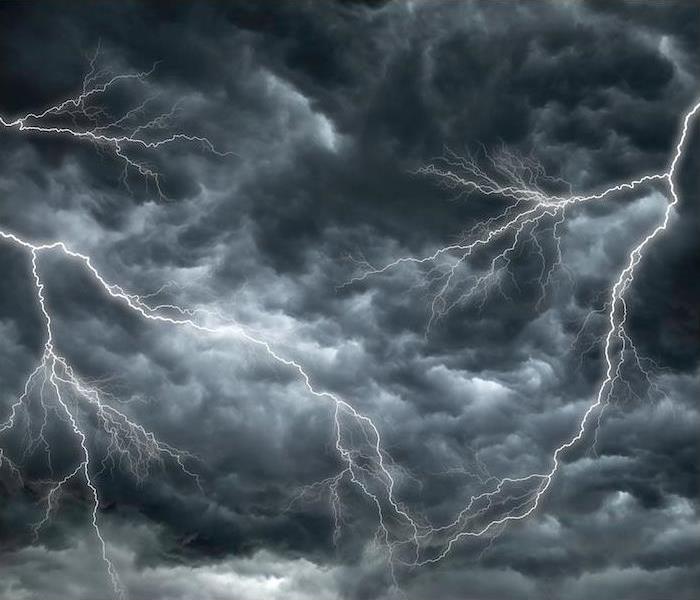What to Check Following a Lightning Strike
9/6/2019 (Permalink)
A lightning bolt arcing across the sky serves as a perfect reminder of how powerful a thunderstorm is. By causing damage to electrical systems, appliances and even a home’s structure, a lightning strike is a force to be respected.
Every thunderstorm is electrically charged, which is how lightning and thunder are developed. When the storm opts to expend some of this energy, it creates a bolt of lightning, which makes shock waves that we hear as thunder when it strikes across the clouds.
The atmosphere does not make a good insulator, so lightning striking toward the ground will often travel through an object to travel more efficiently—and this is why the damages can be so severe.
There are a few ways lightning will typically cause damage to a home—and knowing what to look for after a storm will go a long way.
1. Check your electrical system. Lightning can ignite a building on impact, as bolts regularly reach around 500,000 degrees. However, it can also cause significant damage to wires, creating the potential for an electrical fire in the future. The local fire department can often test for hot spots and identify areas that could be replaced after a strike.
2. Check your electronics. Lightning carries a powerful electrical charge that can overload the electronics when it strikes a home. Always use surge protectors in outlets, and check electronics after a storm to ensure operation.
3. Check the home’s structure. As powerful as shock waves are, at close range it is not uncommon for them to cause serious damage to a home. By cracking foundation or shattering glass, they can create severe damage when lightning has struck nearby. Doing a visual inspection of the home will let you know if there are any problems to address.
If your home has been affected by storm damages or lightning-related fires, give us a call today! We are experts in damage cleanup and can restore your damage quickly.





 24/7 Emergency Service
24/7 Emergency Service
